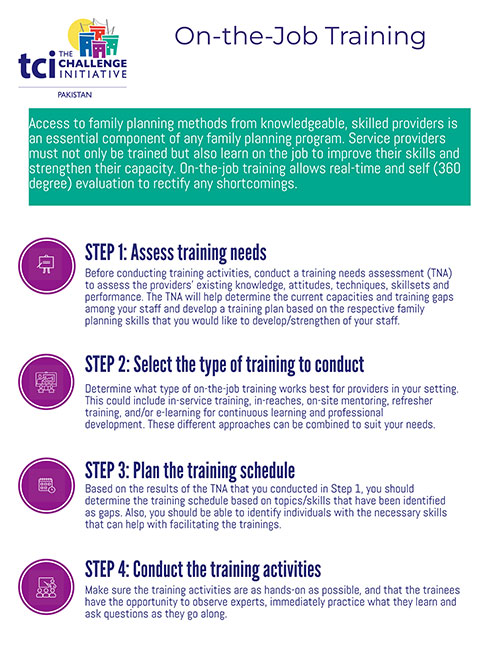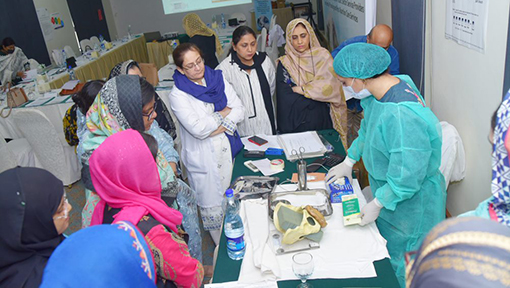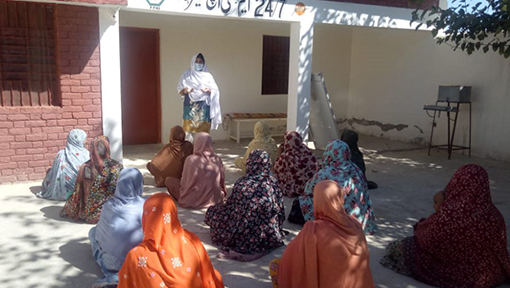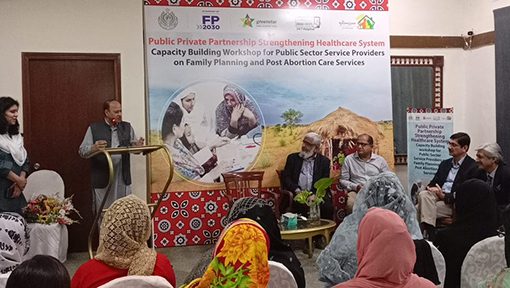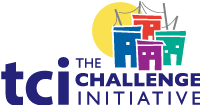Pakistan: Service Delivery
- Home
- Help and Support
- Close
- Toolkits
- Global Toolkit
- AYSRH Toolkit
- Hub Toolkits
- Core High-Impact Practices
- Gender Essentials Mini Course
- Close
- Resource Collection
- Community of Practice
- Coaching
- Log In/Register
- My Profile
- English
On-the-Job Training
What Is It?
 Access to family planning methods from knowledgeable, skilled providers is an essential component of any family planning program. As a result, service providers must not only be trained but also learn on the job to improve their skills and strengthen their capacity.
Access to family planning methods from knowledgeable, skilled providers is an essential component of any family planning program. As a result, service providers must not only be trained but also learn on the job to improve their skills and strengthen their capacity.
On-the-job training allows real-time and self (360 degree) evaluation to rectify any shortcomings. Enhancing on-the-job trainings has proven to be more effective than classroom-based trainings as the receiver learns more and gains hands-on experience.
What are the benefits?
- Generally takes less expenditure than an offsite training
- Focuses more on skills of the service provider
- Learning takes place in more real-time with hands-on practice to rectify any errors and misunderstandings
- Opportunity to gain or strengthen a clearly defined, limited set of skills
- Service providers remain on-site so there is less disruptions to service delivery
- Training staff in underserved areas brings a full range of services to those communities
- Addresses issues of provider bias, increasing opportunities for clients to access a range of family planning methods
How to implement
Step 1: Assess training needs
Before conducting training activities, conduct a training needs assessment (TNA) to assess the providers’ existing knowledge, attitudes, techniques, skillsets and performance. The TNA will help you determine the current capacities and training gaps among your staff and develop a training plan based on the respective family planning skills that you would like to develop/strengthen of your staff.
You can use or adapt an assessment checklist developed by TCI East Africa to inform focus areas of coaching and mentorship. For example, do you want to strengthen a specific area, such as postpartum and post-abortion family planning? Would you like providers to practice a certain skill, such as IUD insertion and removal?
Step 2: Select the type of training to conduct
After identifying what family planning topics your training program will cover, determine what type of on-the-job training works best for the providers in your setting:
- In-service training: The goal of on-the-job in-service training for family planning is to offer practical learning experiences for providers in their own work environment as opposed to using models in a classroom setting. In-service training also provides a monitoring and evaluation perspective to the coaches/program team as to conduct simultaneous quality checks, while disseminating training and hands-on skills.
- In-reaches: Learning is not limited to a classroom or on-job training. A learning exchange program where master trainers can visit the service provider’s clinic(s) or a service delivery point to guide and mentor her/them, while providing services to the clients. Often focusing on provision of LARCs and/or permanent methods, the master trainers works side-by-side with your team, providing your providers with hands-on experience and enabling them to eventually provide these methods without the assistance of the visiting team.
- On-site mentoring: A highly experienced health care provider guides improvement in the quality of care delivered by other providers and the health care systems in which they work through a sustained collaborative relationship. Such mentoring offers opportunity for learning-by-doing, real-time practice and feedback. The mentors will need training of their own to standardize their knowledge and skills, ensure their clinical skills are up-to-date and that they are familiar with the latest policy updates and mitigate any signs of provider bias. Sometimes, the term “supportive supervision” is used to mean on-site mentoring.
- Refresher training: Refresher training ensures that knowledge and skills obtained in a comprehensive training session are continually being strengthened and that information is not lost after the official training. Refresher trainings can take place in-person through formal training and/or TCI coaching sessions. Continuous Medical Education (CMEs) can also be used as refresher sessions, specially organized on hook days such as World Health Day or International Women’s Day.
- eLearning for continuous learning and professional development: Greenstar Social Marketing recently launched an online portal “Provider Portal”, that is a subscription-based eLearning platform for service providers to access videos, literature and recorded sessions at their convenience.
These different approaches can be combined to suit your needs. For example, you may want to have an in-reach to train your providers on IUD insertion, followed by on-site mentoring to ensure providers are using the new skills properly. Or you may decide to deliver refresher training through an eLearning course.
Step 3: Plan the training schedule
- Based on the results of the TNA that you conducted in Step 1, you should determine the training schedule based on topics/skills that have been identified as gaps. Also, as part of the TNA, you should be able to identify individual with the necessary skills that can help with facilitating the trainings. You can use the existing pool of trainers or hire external trainers. Make sure you provide the trainers with sufficient supplies, such as LARC training models, contraceptive commodities, stationery and consumables, to facilitate their training. Where necessary, provide transportation support to help trainers reach the trainees (if at different facilities).
- Next, determine what methods, sources or materials you need to complete the trainings.
Step 4: Conduct the training activities
Now you are ready to implement the training activities. Make sure the training activities are as hands-on as possible, and that the trainees have the opportunity to observe experts, immediately practice what they learn and ask questions as they go along. You should give the trainees the opportunity to discuss their challenges with the trainer, as well as with each other, to maximize learning.
Step 5: Reassess post-training knowledge, skills and needs of staff
Once the training is complete, you must run a post-training assessment to assess providers’ knowledge, attitudes and performance. From this assessment, you can learn the impact of the training and the extent to which you need to provide ongoing support, including additional mentoring, supportive supervision and refresher trainings as needed.
Step 6: Monitor the on-the-job training program regularly
Continually monitor and assess your on-the-job training program – the individual components such as on-site mentoring, refresher training or in-reaches as well as the overall training program as a whole. Are these training approaches working for your staff? Could they benefit from another training approach? Assess the capacity of staff to complete their work, the learning process of the staff and note any new gaps or challenges that emerge. Are they effectively implementing the learnings?
Indicators for success
- Number of on-the-job training sessions hosted/facilitated
- Pre and post test scores
- Number of participants trained through on-the-job training sessions
Resources needed
- Venue, which should be the facility as much as possible
- Transportation if have an external trainer visiting a facility for the one-the-job training session
- Food/refreshments
- Stationary
- IEC materials
TCI APP USERS PLEASE NOTE
You will only receive CERTIFICATES by email – when earning a score above 80% – and will not be able to view or print a certifcate PDF from the TCI app.
Test Your Knowledge
Earn a Certificate
Quiz Summary
0 of 4 Questions completed
Questions:
Information
You have already completed the quiz before. Hence you can not start it again.
Quiz is loading…
You must sign in or sign up to start the quiz.
You must first complete the following:
Results
Results
0 of 4 Questions answered correctly
Your time:
Time has elapsed
You have reached 0 of 0 point(s), (0)
Earned Point(s): 0 of 0, (0)
0 Essay(s) Pending (Possible Point(s): 0)
Categories
- Not categorized 0%
- 1
- 2
- 3
- 4
- Current
- Review
- Answered
- Correct
- Incorrect
-
Question 1 of 4
1. Question
What are some of the benefits of on-the-job training?
CorrectIncorrect -
Question 2 of 4
2. Question
What is the first step in implementing an on-the-job training?
CorrectIncorrect -
Question 3 of 4
3. Question
After completing an on-the-job training, it is not important to monitor and assess the success of the program. Assess the capacity of staff to complete their work, the learning process of the staff and note any new gaps or challenges that emerge.
CorrectIncorrect -
Question 4 of 4
4. Question
Pairing structured on-the-job training with other complementary training approaches can help ensure that the training fully addresses the needs of the trainees.
CorrectIncorrect
Pakistan Service Delivery Interventions
Tips
- Make sure the learning goals for your on-the-job trainings are fully defined and shared with the participants.
- Pairing structured on-the-job training with other complementary training approaches can help ensure that the training fully addresses the needs of the trainees. For example, you can instruct trainees to complete online pre-work to acquire a knowledge base before an in-service training session, or convene in-person or online discussion groups to address any ongoing questions from the trainees.
- Consider using pre-developed competency-based checklists to assess that the skills of the providers are increasing along with the training activities.
- Ensure that the content is credited with the respective licensing bodies in Pakistan.
Challenges
- Trained providers are often transferred to other positions or posts. Conduct advocacy to retain providers for longer periods of time before they transfer.
- The Government of Pakistan has accredited bodies that can be leveraged for on-the-job family planning trainers or mentors. However, if a pool of qualified trainers and mentors does not yet exist, you will need to create, train and support new trainers and mentors.
- Sometimes adequate learning and practice time for on-the-job training is too short, due to the competing demands of everyday work. Following up formal training with more informal mentoring activities or discussion groups can help ensure that the training goals are fully met.


